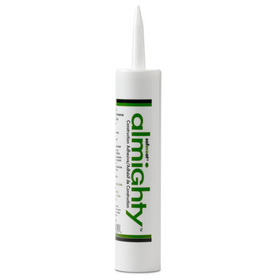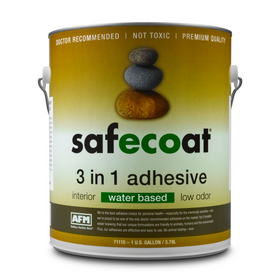
What is the Best Wood Siding?
Last Updated: Apr 13, 2025What would be the best way to enhance the natural and organic feeling and character of your home? You could perhaps invest in a green roof and plant flowers and sod on top of your house. Unfortunately, green roofs are an expensive retrofit and will not work well with homes that don’t have reinforced structures. You could potentially coat your home's exterior in natural lime and earthen plasters for a more organic feel. These types of plasters or stuccos, however, aren’t compatible with every existing home exterior.
Natural wood siding is adaptable to virtually every home type and is one of the most beautiful, affordable, and sustainable exterior cladding options available on the market today.
The Most Common Types of Exterior Cladding Used on American Homes
When it comes to exterior cladding options, most homeowners make their decision based on economic reasons. Both vinyl and cement stucco sidings are the two most common exterior wall materials used on homes started in 2017. More than half of all new home construction during that year used vinyl siding and cement stucco. In comparison, only 5 percent of single-family homes had wood or wood products on their home exteriors. In comparison, over 20 percent used fiber cement sidings such as Hardiplank or Hardiboard.
Contractors usually prefer vinyl siding and cement products because of the low price and ease of building. However, both of these types of products will drastically increase the embodied energy footprint of the home. The cement industry alone accounts for 8 to 10 percent of all greenhouse gas emissions worldwide. Sustainable home building practices would benefit from eliminating its reliance on plastics and other products derived from the petrochemical industry, such as vinyl siding.
Exterior wood cladding is a natural and aesthetically pleasing option for homes. Wood products are often considered carbon neutral. When sourced from sustainably-managed forests, wood home building products can help to sequester carbon from the atmosphere. Sustainably-harvested hardwood siding can delay the release of carbon that occurs when wood products decompose. As we stated in a previous article, “wood products (such as wood siding) made from a 250-year-old hardwood tree can easily last another 250 years, permanently locking up carbon for half a millennium. Opting for salvaged wood furniture or reclaimed wood siding not only reduces pressure on standing forests but can also prolong the carbon sequestration properties of forests that were felled hundreds of years ago.”
The Best Types of Wood Siding: A Comparison
Wood siding offers both aesthetic, environmental, and practical advantages to homes. However, not all wood siding is of the same quality. Inexpensive pine boards are much more susceptible to insect damage than more durable hardwoods. The methods used in curing and preserving wood siding can also have durability and sustainability ramifications. Below, we briefly review the pros and cons of some of the most common types of wood siding.
Table of Contents
- What Is Cypress Wood Siding?
- What Is Cedar Wood Siding?
- What Is Redwood Wood Siding?
- What Is Pine Wood Siding?
- What Is Thermally Modified Wood Siding?
- What Is Engineered Wood Siding?
- How Much Does Wood Siding Cost?
- Is Wood Siding Durable?

What Is Redwood Wood Siding?
Redwoods are widely renowned as some of the most towering trees in the world. They are also one of the fastest-growing trees. It is exceptionally durable and is not prone to shrinking or warping. Compared to other woods, redwood siding requires virtually zero maintenance outside initially staining and periodic sealing every 3-5 years. Like the other two options outlined above, redwood siding has natural insect repellant properties and is not as prone to rot. On the downside, much of the original Redwood forest on the United States' western coast has already been felled, making this an expensive option for exterior wood siding.

What Is Pine Wood Siding?
Pinewood siding is one of the most common types of wood used for exterior cladding. Pine is fast-growing and abundant throughout North America. In general, white pine is used for exterior walls, while yellow pine is the preferred option for 2x4 framing. The main benefit of opting for this type of wood is the relatively inexpensive cost, especially when compared to other wood species. On the downside, pine is not rot-resistant nor repellant of insects. Instead, the “sweetness” of the wood will naturally attract termites and other types of insects that feast on the wood.
One alternative to the chemically intense process of protecting pine boards is shou sugi ban, a traditional Japanese architectural technique. Shou sugi ban involves charring the wood planks with fire and then immediately cooling the wood, effectively creating a charcoal surface finished with natural oils.
The carbonized layer on the wood’s surface acts as a natural sealant. It will preserve the pine boards without chemicals, paints, or other surface treatments.
While offered at a premium, another alternative is thermally modified pine, which takes away most of the cons associated with more inexpensive wood species used for siding.

What Is Thermally Modified Wood Siding?
High-temperature thermally modified wood has been altered by super-heating in the absence of oxygen. It is made more durable to outside elements like moisture, temperature changes, pests, and mold. Unlike most wood cladding options, thermally modified wood achieves the necessary durability without chemicals that off-gas harmful volatile organic compounds (VOCs). Almost any wood species can be thermally modified, making it an attractive option for homeowners who want to use a certain type of wood for appearance, sustainable harvesting, or other reason.
Thermally modified wood siding should last up to 25 years, but it loses its color when exposed to UV rays and eventually turns grey. The color can be preserved with a natural oil sealant.

What Is Engineered Wood Siding?
Engineered wood siding is another option for homeowners to consider. This type of siding is not real wood but rather a manufactured wood product made from woodchips, sawdust, and other castoff wood products from the lumber and milling industry. Engineered wood siding is held together by bonding agents, such as formaldehyde and other chemical resins. On the plus side, engineered wood products are incredibly durable. They can easily last for thirty or more years with limited maintenance. They also reduce pressure on standing forests by using the byproducts of the lumber industry. On the downside, these products do require chemical resins and bonding agents, which can leak VOCs into and around your home.
How Much Does Wood Siding Cost?
The wood siding cost will largely depend on the type of wood you use, how the wood is treated and sealed, and the milling style. Some of the most common wood siding methods include lap siding, drop channel siding, tongue-and-groove siding, split logs, board and batten siding, and shake or shingle siding. Cypress wood siding made into individual shakes will be much more expensive than more simplified white pine boards assembled as lap siding. In general, however, homeowners can expect to pay between $3 and $11 per square foot installed. A 2,000 square-foot home, then, would cost between $3,000 and $8,000 for wood siding.
Is Wood Siding Durable?
With proper maintenance, exterior wood cladding can last for a lifetime, especially when large overhangs cover the wood to protect it from driving rains. Opting for specialized hardwoods such as redwood or cypress might represent a higher upfront cost but could pay for itself over time through reduced maintenance costs.
The methods used to cure and preserve the wood also impacts its overall durability. Painted or stained wood products will create more maintenance but will increase your wood siding's longevity compared to a raw and exposed siding option. Thermally treated wood products also offer additional benefits and prolong the typical lifespan of untreated wood products, such as water resistance, insects, rot, warping, and cupping.
While wood siding may not yet be the most popular exterior cladding option for homes, it is easily one of the most sustainable and natural options for a home when properly sourced.
Tobias Roberts
Tobias runs an agroecology farm and a natural building collective in the mountains of El Salvador. He specializes in earthen construction methods and uses permaculture design methods to integrate structures into the sustainability of the landscape.












